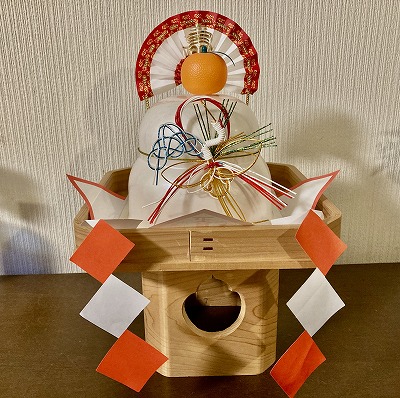New Year Decoration 2

This is called Kagami mochi in Japanese.
It consists of two round-shaped rice cakes, a daidai orange, red and white paper, and so on. It’s an offering to the Shinto deity, and people had decorated it wishing for a good harvest since around the 14th century.
Kagami mochi means mirror rice cake. Traditionally mirror has been regarded as the object representative of a divine spirit. Therefore it’s usually placed on the Japanese-style alcove or the household Shinto altar. Since I don’t have either, I put it on the sideboard.
At the end of the year, Japanese people clean their houses to welcome the year’s deity and hang the shimekazari on the door. It is believed that the deity’s soul comes through the door with the shimekazari and stays in the Kagami mochi for a week or two. (The term differs depending on the area.)
After decorating, people eat it to gain the deity’s power for good health and good luck.


